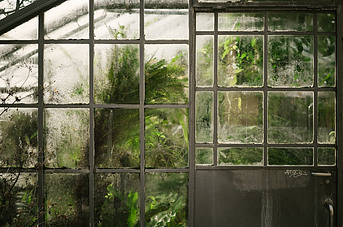Among the January gardening tasks could be planning for the new season, checking the germination of the seeds, and harvesting the produce. We also start sowing and planting in the greenhouse. We collect grafts for spring grafting in the orchard. We also take care of winter protection against the cold and game. In winter, let’s not forget the birds.
Smart gardeners have a store for the winter but can also go to the garden and harvest crops in January. What can be in the garden in winter?
You will love this book; it has plenty of practical advice and know-how. After reading the book, you will feel that you could grow a successful winter garden.
January Gardening Tasks Regarding Current Crops
We can have quite a few winter vegetables in the garden, and even more, if we think of a greenhouse. In winter, we can pick Swiss chard, leafy, and Brussels sprouts from the garden; Swiss chard and parsley also overwinter. Likewise, arugula, the one we greengrocers call wild, whose botanical name is Diplotaxis tenuifolia, can also be D. muralis or Rucola selvatica. Of course, its growth usually does not stop in the greenhouse and can be cut all winter long.
Carrots and celery are also conditionally winterized. Carrots are sown sometime in August, as slightly smaller ones overwinter more easily. The same applies to green. Winter leek varieties do not freeze, either. Winter varieties are stockier and grayish in color, and their false stem is wider but shorter. Wintering will be better if we surround them with straw or cover them with soil at the beginning of winter.
Winter varieties of radicchio, such as Verona, Trieste, Solkan, or Treviso, will soon be available for cutting. In the garden, winter salad varieties are also winterized, but we do not cut them in January.
When Should the Gardener Start Thinking About What to Do in the Vegetable Garden to Have Vegetables in the Winter?
You really have to think about this early because we plant Brussels sprouts and kale in June, so we sow at the end of May for seedlings. It’s the same with leeks. Winter varieties are transplanted only at the end of June, but sowing can be done in the middle of this month. Sowing or transplanting too quickly causes more problems than benefits.
How Do We Choose the Seeds of Winter Plants? Not Every Leek Will Survive the Cold…
We need to know the varieties that hibernate, so it is necessary to read something or go to a lecture from time to time. Not all varieties of leek indeed overwinter, Carentan overwinters best, but usually, an elephant overwinters without any problems. We know winter and summer varieties even with salads, but gardeners already know more about this.
Does the Same Apply to the Greenhouse? What Is Happening in the Greenhouse Now?
Of course, several plants in the greenhouse can be cut and harvested throughout the winter. These are the same types of vegetables, but they grow longer. Also, when the cold starts, we move a lot of non-winter cabbage, annual varieties of radicchio, and maybe something else to the greenhouse. In short, the greenhouse offers even more throughout the winter, as it rarely freezes.
What Are the Essential January Gardening Tasks So the Vegetable Garden Will Be a Pleasure for Us in the Following Months?
There are no urgent tasks yet, at least as far as sowing or planting is concerned. Let the earth rest nicely in the open air. If we forget some garlic, we could plant it if the ground is not frozen. In the greenhouse, work can already begin. Sow the peas and broad beans, with a bit of risk, also monthly radishes and annual or winter salad varieties. We can also sow arugula and lamb’s lettuce. However, the weather must also be considered. If the weather is very cloudy, we wait a little longer, but work in the greenhouse can begin if there is more sun and a little warmer.
In any case, we are planning a new season in January; we will prepare a sowing plan so that the rotation rules are observed as much as possible. We can also take some time for education. We clean the drawers with seeds and discard all the seeds that are too old (more than 3 years), or if the seed is something special, we do a home germination test.
We do not sow to raise seedlings in January because it is still too early.
Or we can grow microgreens or sprouts on bright and warm windows. In January, we ensure that wild animals, especially birds, have enough food.
We must be careful not to harm the earth. Walking on too wet or frozen snowy ground destroys the structure of the soil. In the summer, therefore, the soil compacts and collapses much more. If this happens, there is no air in it, and microorganisms will have big problems without fertile soil. Also, plant roots will not have favorable conditions for growth and development.
We also look at when we did the last soil analysis. If it is older than five years and the last analysis was not the best, we do a new one. We take a soil sample and take it to the nearest advisory service or the Agricultural Institute. Only in this way can we fertilize in the following years to improve the soil, but not worsen the conditions for the growth of vegetables. The soil sample must be taken correctly; I advise you to learn about it online.
